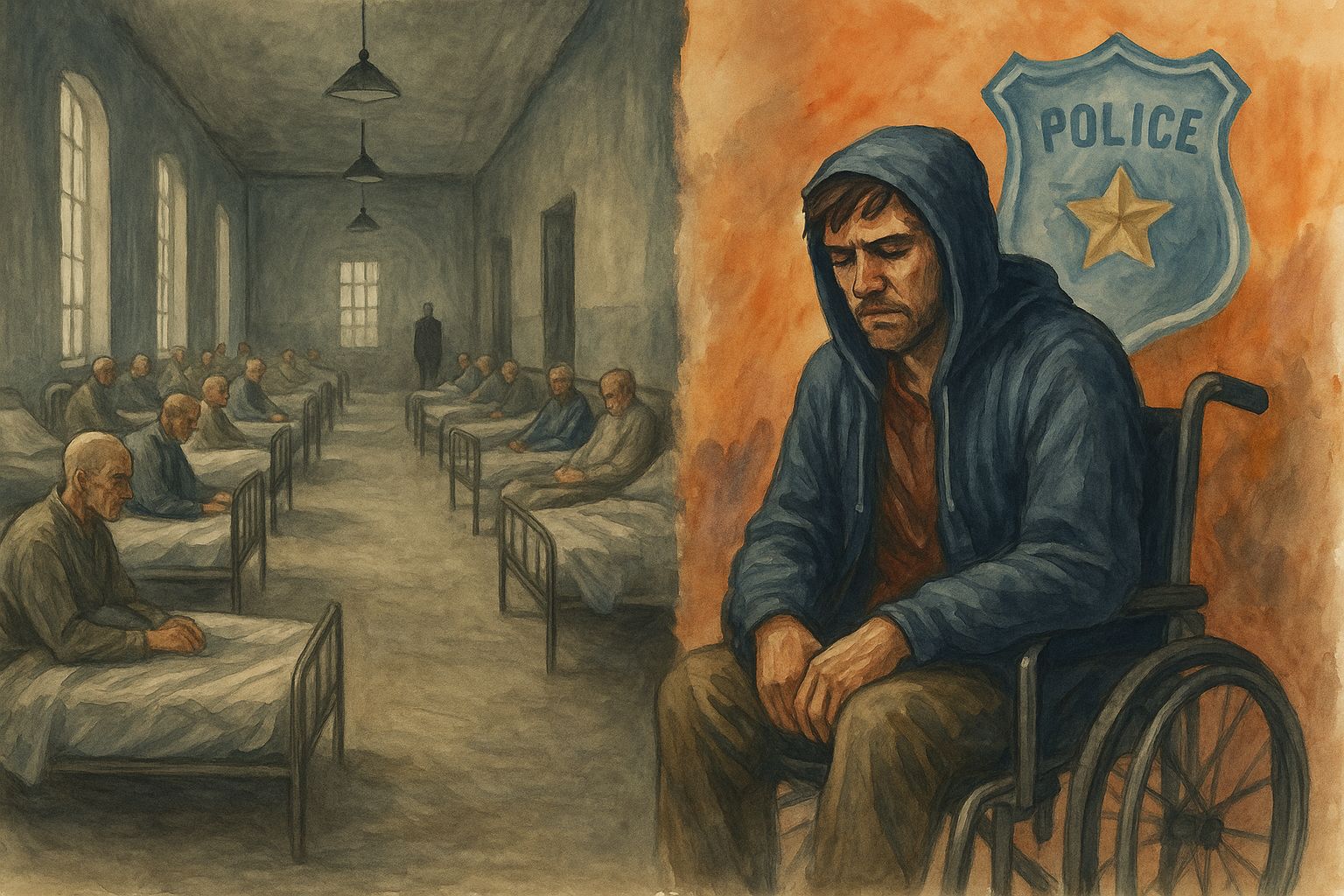- Disability Lens Digest
- Posts
- Donald Trump’s 2025 Executive Order on Institutionalization: Reversing Disability Rights Progress?
Donald Trump’s 2025 Executive Order on Institutionalization: Reversing Disability Rights Progress?

On July 24, 2025, President Donald Trump signed an executive order titled “Ending Crime and Disorder on American Streets,” sparking widespread condemnation from disability advocates, civil liberties organizations, and experts in housing and mental health policy. The order directs federal agencies and encourages states to expand involuntary institutionalization of people deemed “unable to care for themselves,” focusing on individuals experiencing homelessness, mental health disabilities, or substance use disorders. Key provisions include easing legal thresholds for forced institutionalization, redirecting funds away from evidence-based programs like Housing First or harm reduction, mandating expanded data collection on unhoused and disabled individuals, and penalizing localities that refuse to enforce anti-camping or panhandling ordinances. This move marks a sharp departure from decades of community-based support models that have prioritized autonomy, inclusion, and voluntary treatment.
Civil rights organizations have reacted swiftly and strongly. The ACLU warned that forced institutionalization is not a solution, stating that “institutions are dangerous and deadly, and forced treatment doesn’t work.” The Autistic Self Advocacy Network (ASAN) echoed these concerns, highlighting the historical trauma of institutionalization and its legacy of abuse, neglect, and systemic violence against disabled individuals. Homelessness advocacy groups, like the National Homelessness Law Center, denounced the order as rooted in outdated, racist myths that criminalize poverty rather than addressing its root causes. Across the board, experts agree this policy would strip people of their rights, worsen homelessness, and endanger vulnerable populations by pushing them into institutions long known for human rights abuses.
For disability rights advocates, this executive order represents not just a policy shift but a direct assault on the decades-long fight against forced institutionalization. Landmark victories like the Americans with Disabilities Act (ADA) and the Olmstead v. L.C. Supreme Court ruling affirmed the right of people with disabilities to live independently in the community, with autonomy and dignity. Institutionalization has historically meant isolation, abuse, and a profound loss of freedom. Rolling back these protections could undo years of progress, reinstating systems that segregate and harm. The disability community now faces the daunting question: if this policy comes fully into effect, how deeply could it entrench systems of forced institutionalization, and how long — and how difficult — would it be to reverse such damage? Can we truly measure how far back it might set the fight for autonomy, or how many lives it might affect before we’re able to correct course?
My Thoughts
This executive order makes me feel deeply sad and angry because it’s undoing decades of hard work by the disability rights movement. We fought so hard to escape the era when disabled people were locked away in institutions, treated as problems to hide rather than people with rights. Seeing us revert back to that is heartbreaking and infuriating.
For people in my community, this is a terrifying loss of independence. Many of us already rely on support systems like in-home care to live as independently as possible. Policies like this could make it even harder to stay in our own homes, stripping away the little control we’ve fought to have over our own lives. People think institutions will “help” disabled people, but they don’t understand that forced institutionalization takes away basic rights. Not all disabilities have treatments that “fix” us, and honestly, we don’t need to be fixed. Our disabilities shape who we are — it’s part of our identity, and no one has the right to erase that.
If I could say one thing to lawmakers, it would be this: we need to learn from our past mistakes, not repeat them. History shows us how much harm institutionalization has caused. Lawmakers need to actually study those lessons before enacting policies like this. We deserve to live in our communities with dignity, not be hidden away because society refuses to support us the right way.
Question to Consider
If this policy comes fully into effect, how deeply could it entrench systems of forced institutionalization, and how long — and how difficult — would it be to reverse such damage? Can we truly measure how far back it might set the fight for autonomy, or how many lives it might affect before we’re able to correct course?
Sources
2. Autistic Self Advocacy Network (ASAN): https://autisticadvocacy.org/2025/07/asan-denounces-executive-order-criminalizing-disabled-unhoused-people/
3. National Homelessness Law Center: https://homelesslaw.org/statement7242025/
4. NPR Coverage: https://www.npr.org/2025/07/24/nx-s1-5479139/trump-homelessness-executive-order-civil-commitment-camping
5. Fact Sheet from White House: https://www.whitehouse.gov/fact-sheets/2025/07/fact-sheet-president-donald-j-trump-takes-action-to-end-crime-and-disorder-on-americas-streets/